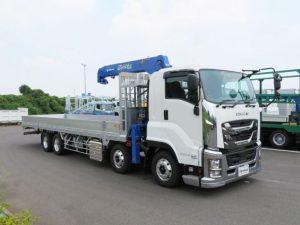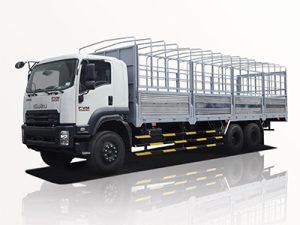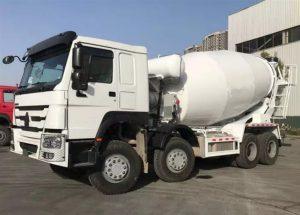Monday to Saturday - 8:00 -17:30
How Do Cement Trucks Work: A Comprehensive Guide
Introduction
Cement trucks are a crucial part of the construction industry, transporting concrete from mixing plants to job sites. They are designed to ensure that concrete remains in a workable state during transportation. This article will explore how cement trucks work, their components, operational processes, and much more. We’ll also provide useful tips for using cement trucks effectively and answer common questions regarding their operation.
What is a Cement Truck?
A cement truck, also known as a concrete mixer truck, is a vehicle that combines cement, water, and aggregates (like sand and gravel) to create concrete. It is equipped with a rotating drum to keep the mixture homogenous and prevent it from hardening before it reaches the construction site.
The Anatomy of a Cement Truck
Main Components
Understanding how cement trucks work starts with knowing their key components:
- Chassis: The foundation of the truck that supports all other components.
- Drum: The large, rotating cylindrical container where mixing occurs.
- Water Tank: A tank that holds water to adjust the consistency of the concrete if necessary.
- Hopper: The opening at the top of the drum where cement, aggregates, and water are loaded.
- Augers: Screw-like devices that help in dispensing the concrete from the drum.
- Controls: User interfaces that allow the driver to operate the truck and monitor the mixing process.
Types of Cement Trucks
There are various types of cement trucks, each tailored to specific requirements:
- Standard Mixer Trucks: The most common type, primarily used in construction projects.
- Rear-Discharge Trucks: Featuring a chute at the back to dispense concrete.
- Front-Discharge Trucks: Allowing drivers to control the pouring process from the cab.
- Volumetric Mixers: Trucks that mix ingredients on-site, ensuring maximum freshness.
How Do Cement Trucks Work?
The Mixing Process
The welding component is critical in the production of concrete. The mixing process typically involves the following steps:
- Loading: Cement, water, and aggregates are loaded into the drum through the hopper.
- Mixing: The drum rotates to blend the materials into a uniform mixture.
- Transportation: As the truck drives, the drum continues to rotate, keeping the concrete fresh.
- Discharge: Upon arrival, the concrete is dispensed using augers or chutes.
The Role of Water in the Mixing Process
Water is an essential ingredient in concrete making. It not only helps in mixing the dry components but also initiates the chemical reaction necessary for curing. The water-to-cement ratio significantly influences the strength and durability of the concrete.
Operational Procedures
Driving and Delivery
Delivering concrete requires careful driving and adherence to safety standards. Here are key operational procedures:
- Pre-Trip Inspection: Conduct a thorough check of the truck before departure, ensuring all systems are functioning.
- Route Planning: Choose the best route to avoid delays and ensure timely delivery.
- Speed Control: Maintain a moderate speed to prevent sloshing of concrete inside the drum.
- Customer Communication: Stay in contact with the site manager to coordinate the arrival and pouring times.
Maintaining Concrete Quality
To guarantee the quality of delivered concrete, consider the following tips:
- Ensure the mixture is prepared according to specified ratios.
- Keep the drum rotating during transportation.
- Monitor the temperature to avoid premature setting, especially in hot weather.
Tips for Efficient Cement Truck Operations
Best Practices for Drivers
- Regular Training: Participate in training to stay updated on safety practices and truck operation.
- Communication: Establish clear communication with the site teams to facilitate smooth operations.
- Load Management: Ensure loads are properly balanced to maintain control and stability.
Preventative Maintenance
Regular maintenance is crucial to ensure efficiency and safety. Here are maintenance tips:
| Maintenance Task | Frequency | Description |
|---|---|---|
| Fluid Checks | Daily | Check oil, water, and hydraulic fluid levels. |
| Tire Inspection | Weekly | Check for wear and proper inflation. |
| Drum Cleaning | After Each Use | Clean the drum to prevent concrete buildup. |
| Brake Checks | Monthly | Inspect and service the braking system. |
Environmental Considerations
Reducing Emissions and Waste
Cement trucks can contribute to environmental issues through emissions and waste. Here are ways to mitigate these effects:
- Eco-Friendly Mixtures: Utilize greener alternatives like fly ash or slag in concrete production.
- Efficient Routing: Optimize delivery routes to reduce travel distances and emissions.
- Waste Management: Implement recycling practices for excess concrete and washout water.
Sustainable Practices
Adopting sustainable practices can positively impact the environment while also promoting a company’s image. This could involve using biofuels or implementing electric or hybrid cement trucks in the fleet.
Future of Cement Trucks
Innovations and Technology
The construction industry is constantly evolving, and cement trucks are no exception. Future trends may include:
- Automation: The use of autonomous trucks to streamline operations.
- Smart Technology: Integration of IoT devices for tracking and monitoring truck performance.
- Alternative Fuel Sources: The shift towards electric and hydrogen fuel cell trucks.
Challenges Facing the Industry
The cement trucking industry also faces several challenges, including:
- High operational costs due to fuel and maintenance.
- Increased regulations regarding emissions.
- Competition from alternative concrete delivery methods.
Frequently Asked Questions
1. How long can concrete be mixed in a cement truck?
Generally, concrete can be transported in a cement truck for up to 90 minutes before it begins to set. However









